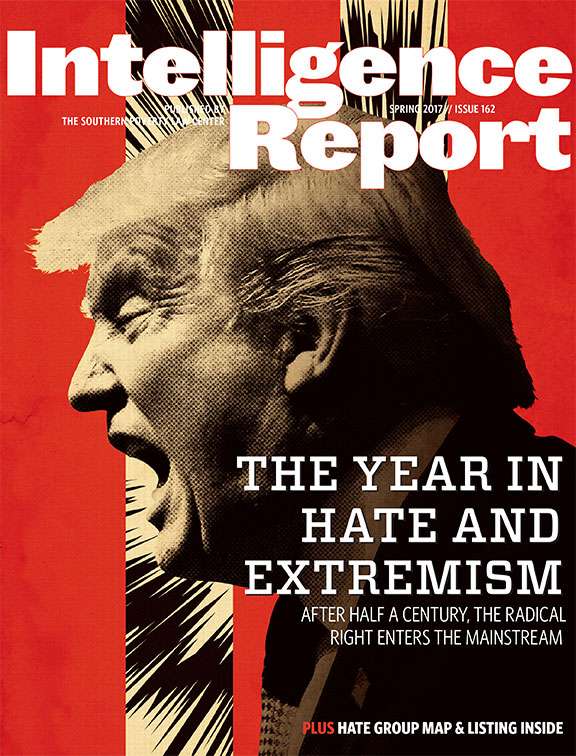The Southern Poverty Law Center Is Counting Extremists Again
Do its numbers tell a story?


The Southern Poverty Law Center has released its 2017 report on "The Year in Hate and Extremism." This is the annual study, inevitably covered heavily in the press, in which the SPLC tries to count the number of hate groups and anti-government "Patriot" groups that were active in the U.S. in the prior year. This edition's numbers are interesting, to the extent that they're reliable; but as always, I have questions about their reliability.
It is obviously far easier to count the number of groups than the number of people active in these groups, so I understand why the center takes that approach. And while people sometimes complain about the fact that the SPLC counts the different chapters of an organization as separate groups, that method may do a better job of showing you how much activity there is on the ground. The trouble is that if a group splinters—as these groups often do—that shows up as growth. (Last year's report, for example, showed a big spike in KKK groups, but it also conceded that this was probably a matter of racists forming smaller new klaverns after two big Klans fell apart.) There have also been several cases where a group winks onto one of these lists not because it was just formed but because it just came to the SPLC's attention. That's inevitable, but it means people sometimes read too much into the year-to-year changes in the numbers.
On top of that, there are all sorts of questions about how certain items end up on these lists in the first place. I see that the SPLC is no longer counting the Moorish Science Temple among the "Patriot" groups—a wise decision—but the list still has separate entries for both WorldNetDaily and WorldNetDaily's book imprint. What on earth could justify that? There's also the matter of where you draw the line between an "extremist" group and some plain old constitutionalist conservatives. I understand why the Patriot roster includes militias and III%ers, but do they really need to list every Eagle Forum chapter in the land?
All that said, the SPLC count isn't completely useless. When you see a really big jump or decline in its numbers, as opposed to some small shifts along the margins, it's a decent sign that something's going on. The SPLC data show the militia movement taking off under Bill Clinton, declining under George W. Bush, and then surging again in the Obama years. And that reflects pretty much everyone's understanding of the facts on the ground, even if we don't always interpret the meaning of those facts in the same way.
This year the number of militias dropped from 276 to 165. The broader number of anti-government "extremists" also fell sharply, from 998 to 623. Meanwhile, the number of hate groups bumped up from 892 to 917. I'm not sure how significant an increase of 25 groups is, and I should note that the total is still lower than it was just three years ago. I'm more interested in a big leap within the list of hate groups: The number of anti-Muslim organizations zoomed from 34 to 101.
The SPLC report suggests that the drop in anti-government groups was a reaction to a pro-gun Republican coming to power, much like the decline during the Bush era. That doesn't seem very plausible—remember, this is a look back at 2016, and for most of the year it was widely expected that Hillary Clinton would win the election. The report also suggests that the crackdown on the Malheur occupation was a "key factor in the decline of the Patriot groups." Oddly, another article in the same issue of the SPLC's magazine argues that the Malheur saga "further emboldens" the nation's gun-toting radicals. Which is it, folks?
But as long as we're skylarking about what all these numbers might mean, let me throw a thought onto the table. In mainstream Republican circles last year, the more nationalist side of the right outpaced the relatively libertarian side. (You don't need an SPLC-style report to see that—just compare Donald Trump's performance in the primaries to Rand Paul's.) Given that, I wouldn't be surprised at all if the far end of the right has seen a leap in the number of groups worried primarily about outsiders and a decline in the number of groups worried primarily about the government. If I were prone to probing for patterns in the SPLC's numbers, I'd start there.
Show Comments (117)